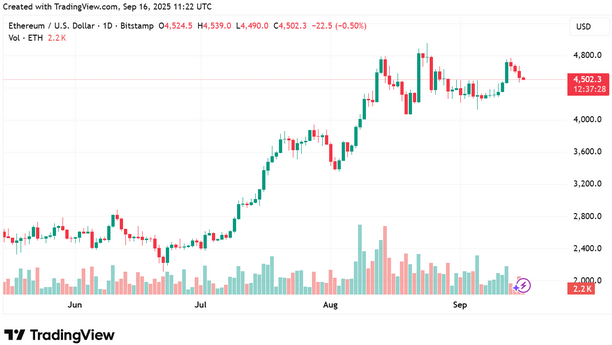What Web3 Means for the Future of Digital Fun — Beyond Finance
When most people hear “Web3,” they immediately associate it with cryptocurrency trading, DeFi protocols, or NFT marketplaces. While those are foundational use cases, Web3 is quickly evolving beyond the boundaries of finance. Today, it’s driving innovation in entertainment, gaming, virtual experiences, and online engagement — and the implications are just starting to unfold.
With decentralization, smart contracts, and blockchain-backed identity systems at its core, Web3 opens the door to new models of digital interaction. These innovations aren’t just changing how we exchange assets — they’re reshaping how we play, connect, and explore digital environments.
Web3’s Expansion into Digital Entertainment
The transition from Web2 to Web3 represents more than just a technological upgrade. It’s a shift in how platforms are built, who controls them, and how users participate. While early use cases focused on finance and token exchanges, the current wave of innovation is pushing Web3 into entertainment.
Decentralized applications (dApps) now power immersive experiences across online games, social platforms, and even music and video content delivery. These platforms allow users to earn, trade, or use tokens to unlock digital experiences — creating a bridge between utility and fun.
One area that’s seeing major momentum is blockchain-based gaming. Unlike traditional games, which rely on centralized servers and closed ecosystems, Web3 games empower players through asset ownership, verifiable outcomes, and even community-led governance.
Platforms like Highroller, one of Canada’s leading sweepstakes-style slot platforms, showcase this shift by blending traditional slot-style gameplay with modern mechanics designed around user-friendly coin economies and engagement, rather than real-money outcomes.
The Rise of Digital Ownership
A key differentiator in Web3 entertainment is the concept of digital ownership. In Web2, users consume content on platforms owned by large corporations — but in Web3, users can actually own the assets they interact with.
This concept is already taking hold in sectors like:
- Gaming, where players can own skins, avatars, or power-ups stored as NFTs
- Virtual real estate, where land parcels in the metaverse are bought, sold, or rented
- Music and art, where creators issue ownership rights directly to fans via tokenization
The ability to own and trade digital assets adds a new layer of personalization and interaction. It also opens doors for creators to monetize content directly, without intermediaries taking a large share.
Decentralized Identity and Community Governance
Another game-changing component of Web3 is decentralized identity. Through wallets or blockchain-based profiles, users can move seamlessly across platforms without creating new logins or sharing personal information with third parties.
This structure also supports community-led governance. Web3 platforms often use tokens to let users vote on decisions — from feature development to content moderation. That level of transparency is a major shift from the opaque algorithms and closed-door policies of Web2 platforms.
Entertainment platforms can benefit from this model by involving users in everything from storyline decisions to feature releases, creating a more engaged and loyal community.
Token Rewards: Redefining Engagement
Token-based reward systems are another defining feature of Web3 entertainment. Instead of traditional points or loyalty programs, users can earn blockchain-based tokens for completing activities, engaging with content, or contributing to a platform’s growth.
These tokens can sometimes be exchanged for digital goods, unlock exclusive content, or be used to access advanced features. Because of their blockchain foundation, they’re also portable — allowing for cross-platform integration.
Even in non-financial environments, these systems are gaining traction. For example, social casino-style platforms use coin-based systems to keep users engaged and entertained, without involving any form of real-world currency or wagering.
A good example of how platforms are adopting these principles responsibly is Highroller, where users can enjoy immersive gameplay through a reward-based structure that emphasizes entertainment over value-based outcomes.
Privacy and Transparency
Web3 also addresses one of the major criticisms of Web2: lack of transparency. Centralized platforms often operate behind closed doors when it comes to how data is used, how algorithms work, and how decisions are made.
Web3 platforms, in contrast, are built on open-source protocols and smart contracts. These tools make it easier to verify how a system operates, ensuring fair interactions and giving users greater peace of mind — especially important in entertainment platforms that involve points, coins, or digital items.
This approach is particularly relevant for platforms dealing with large user bases and interactive content, as it allows users to engage confidently, knowing that their actions and achievements are recorded on-chain and cannot be manipulated.
Real-World Use Cases Are Already Here
Web3 isn’t just theoretical — it’s already being applied in digital entertainment across multiple sectors. For example:
- Decentraland and The Sandbox offer virtual worlds where users can attend concerts, meet friends, or explore branded content — all powered by blockchain.
- Audius, a decentralized music streaming platform, allows artists to share tracks and interact with fans directly, removing traditional middlemen.
- OpenSea and Rarible let creators sell digital collectibles that users can use, display, or trade across platforms.
The foundation for mass adoption is forming, and it’s being fueled by both user interest and developer experimentation.
For a deeper look into how token-based systems are changing the internet’s structure, the MIT Media Lab published a study on decentralized digital economies, which outlines how reward-based systems in digital environments are altering user behavior.
Looking Ahead
Web3 is more than just the next phase of the internet — it’s a shift in power from platforms to people. For the world of digital fun, that means new ways to interact, own, and contribute to the experiences we enjoy online.
As blockchain adoption continues to spread, expect to see even more applications focused not on trading assets, but on creating meaningful and rewarding digital interactions. Whether you’re spinning reels on a social slot platform or participating in a decentralized concert, the future of online entertainment is already being reshaped — and Web3 is at the core of it.
Disclaimer: This is a paid post and should not be treated as news/advice. LiveBitcoinNews is not responsible for any loss or damage resulting from the content, products, or services referenced in this press release.
The post What Web3 Means for the Future of Digital Fun — Beyond Finance appeared first on Live Bitcoin News.
Vous aimerez peut-être aussi

Ethereum Price Prediction: ETH Targets $10,000 In 2026 But Layer Brett Could Reach $1 From $0.0058

Facts Vs. Hype: Analyst Examines XRP Supply Shock Theory
